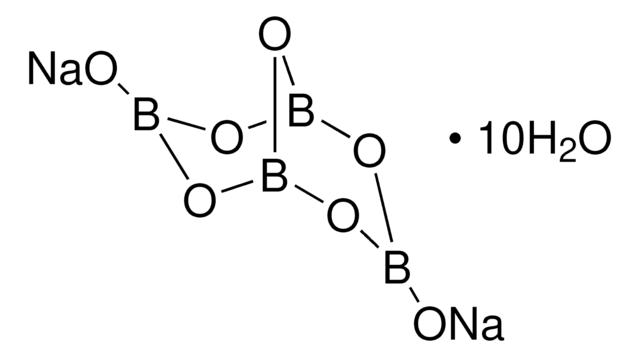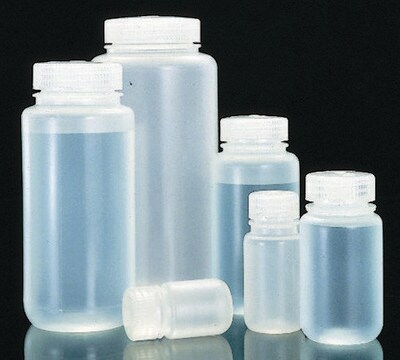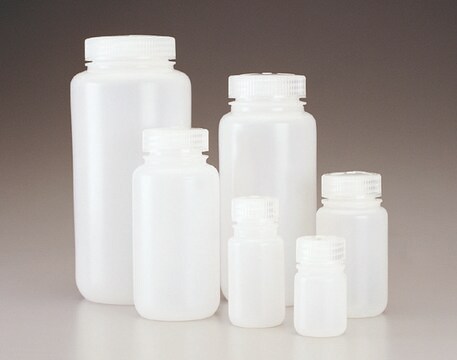B9876
Tetraborato de sodio decahydrate
ReagentPlus®, ≥99.5%
Sinónimos:
Borato de sodio decahydrate, Borax decahydrate
About This Item
Productos recomendados
Agency
suitable for SM 4500 - NH3
Línea del producto
ReagentPlus®
Análisis
≥99.5%
formulario
powder
pH
9.2 (10 g/L)
densidad
1.73 g/mL at 25 °C (lit.)
temp. de almacenamiento
room temp
cadena SMILES
O.O.O.O.O.O.O.O.O.O.[Na+].[Na+].[O-]B1Ob2ob([O-])ob(O1)o2
InChI
1S/B4O7.2Na.10H2O/c5-1-7-3-9-2(6)10-4(8-1)11-3;;;;;;;;;;;;/h;;;10*1H2/q-2;2*+1;;;;;;;;;;
Clave InChI
CDMADVZSLOHIFP-UHFFFAOYSA-N
¿Está buscando productos similares? Visita Guía de comparación de productos
Aplicación
- A component of a buffer solution used in the separation and estimation of thiamin and its phosphate esters in commercial tablets.
- A fluxing agent in the preparation of ceramizable silicone rubber-derived composite materials.
- A crosslinking agent in the synthesis of porous foams by reacting cellulose nanofibres with poly-vinyl alcohol.
Información legal
Palabra de señalización
Danger
Frases de peligro
Consejos de prudencia
Clasificaciones de peligro
Eye Irrit. 2 - Repr. 1B
Código de clase de almacenamiento
6.1D - Non-combustible acute toxic Cat.3 / toxic hazardous materials or hazardous materials causing chronic effects
Clase de riesgo para el agua (WGK)
WGK 1
Punto de inflamabilidad (°F)
Not applicable
Punto de inflamabilidad (°C)
Not applicable
Certificados de análisis (COA)
Busque Certificados de análisis (COA) introduciendo el número de lote del producto. Los números de lote se encuentran en la etiqueta del producto después de las palabras «Lot» o «Batch»
¿Ya tiene este producto?
Encuentre la documentación para los productos que ha comprado recientemente en la Biblioteca de documentos.
Los clientes también vieron
Nuestro equipo de científicos tiene experiencia en todas las áreas de investigación: Ciencias de la vida, Ciencia de los materiales, Síntesis química, Cromatografía, Analítica y muchas otras.
Póngase en contacto con el Servicio técnico








